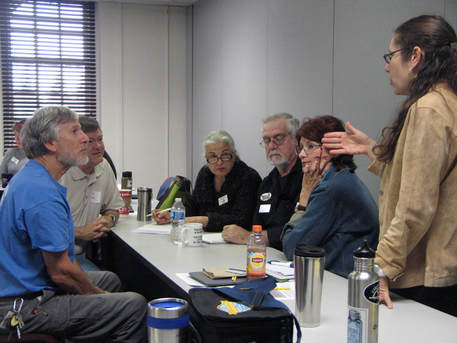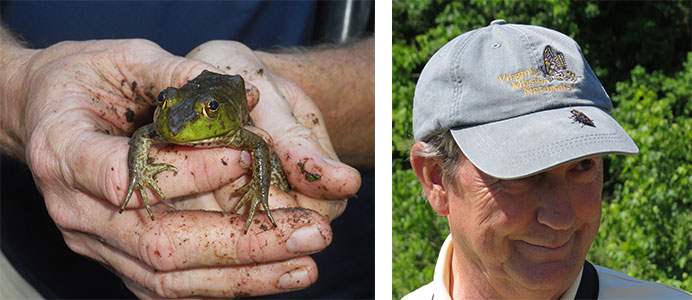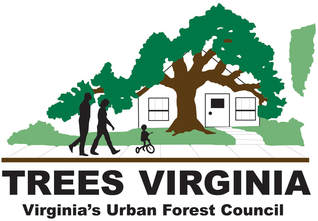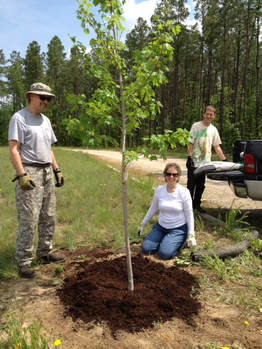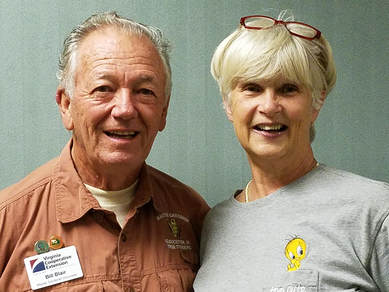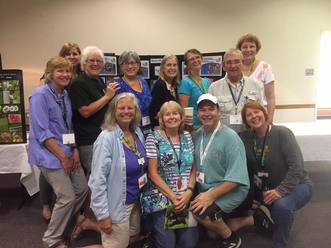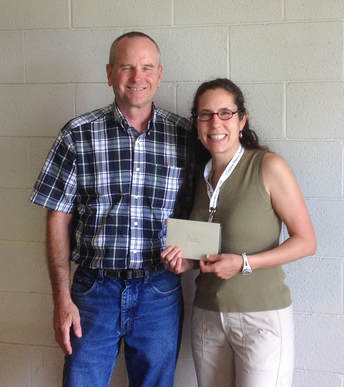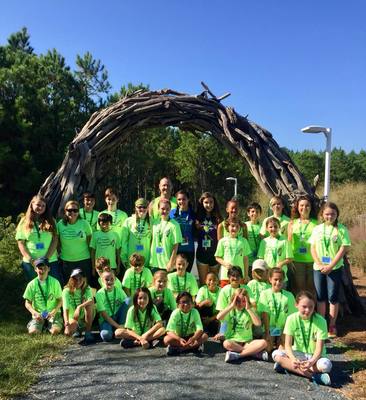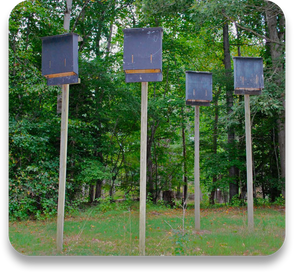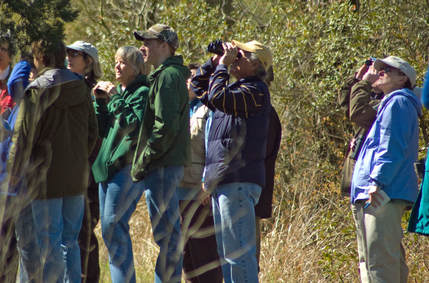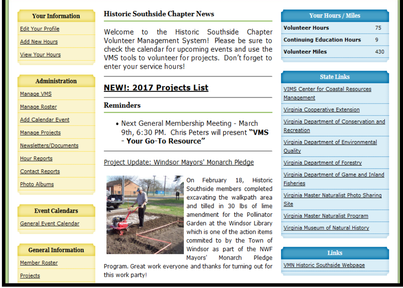Laurels – Fall 2017
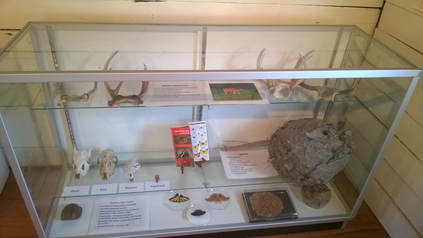 Some of the wildlife artifacts on display at Pleasant Grove. Photo by Walter Hussey, VMN-Rivanna Chapter.
Some of the wildlife artifacts on display at Pleasant Grove. Photo by Walter Hussey, VMN-Rivanna Chapter.
Contributed by Walter Hussey, VMN-Rivanna Chapter
Pleasant Grove is a county park in Fluvanna County with 23 miles of trails on more than 800 acres, including 2.5 miles along undeveloped Rivanna riverfront. VMN volunteers in the Rivanna Chapter have been active in habitat restoration and education at the site.
VMN volunteers have assisted with the development of a new Nature Room at the Museum, working with partners to acquire the necessary permits for collecting and displaying wildlife artifacts. VMNs also have generated information for new trail maps on the natural habitats along the trails as well as wildlife, plants and flowers you may see. They have assisted in creating 70+ acres of wildlife meadow and planting 1200+ trees over the last three years. In addition, they installed and monitor 34 bluebird nest boxes. And, they have partnered with Fluvanna Master Gardeners on a new Butterfly Garden with over 500 native plants in 4 landscape designs as examples for home pollinator friendly native plant landscapes. In terms of education events, VMNs lead hikes and nature activities and an annual Earth Day field trip for first and second graders.
In addition to Walter Hussey, who has spearheaded many of these efforts, other Rivanna Chapter volunteers providing major contributions have included Ida Swenson, Jeff Divers, Pat Coldeway, and Deborah Anderson. A dozen or more additional volunteers from the chapter have assisted with one or more of the projects at the site.
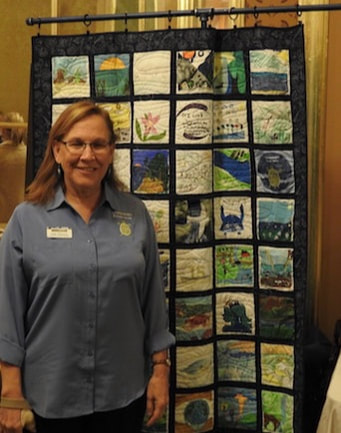 Jody Ullmann, VMN-Tidewater Chapter, with a conservation-themed quilt with squares designed by local schoolchildren. Photo by Bill Ullmann.
Jody Ullmann, VMN-Tidewater Chapter, with a conservation-themed quilt with squares designed by local schoolchildren. Photo by Bill Ullmann.
Jody Ullmann, VMN-Tidewater Chapter, received the Garden Club of Virginia Conservation Educator of the Year Award for all of the many programs she has developed both in her work role as the Education Coordinator for Lynnhaven River NOW and in her volunteer role as a Virginia Master Naturalist volunteer in the Tidewater Chapter. Jody accepted the award at the 2017 Garden Club of Virginia Fall Symposium, where she gave a moving speech describing her programs and the many ways adults can inspire our next generation of natural resource stewards.
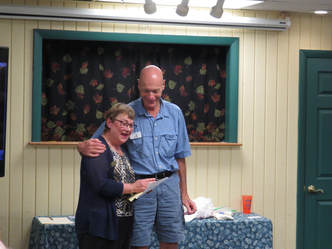 Bob Dinse (VMN-Fairfax Chapter) receives a 2,500 hour recognition pin at Hidden Oaks Nature Center in Annandale, VA.
Bob Dinse (VMN-Fairfax Chapter) receives a 2,500 hour recognition pin at Hidden Oaks Nature Center in Annandale, VA.
Bob Dinse, VMN-Fairfax Chapter, completed 2,500 hours of volunteer service as a Virginia Master Naturalist.
VMN-Fairfax Chapter Training Chair Peter Mecca coached students at George Mason High School in Falls Church who received the 2017 Presidential Environmental Youth Award (US EPA). The George Mason High School (GMHS) Environmental Group, a group of 11 students in Northern Virginia, have worked for the past two years to implement two projects, with a focus on providing healthy, sustainable food sources that can be produced in an urban area. Interest in urban sustainability began after the students received a grant from the Chesapeake Bay Foundation to work with soil scientists from the Northern Virginia Soil and Water Conservation District on ways to reduce water runoff in urban areas. From this project, the GMHS Environmental Group became interested in other urban sustainable practices and received a “Super Grant” from the Falls Church Education Foundation to design and implement a hydroponics and aquaculture project at their high school and a local middle school.
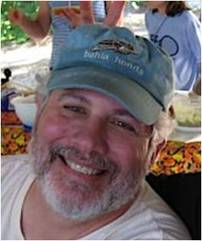 VMN-Fairfax Chapter Advisor, Jim McGlone, is also a member of our VMN Steering Committee.
VMN-Fairfax Chapter Advisor, Jim McGlone, is also a member of our VMN Steering Committee.
al Excellence Award from Fairfax County
Jim McGlone’s nomination featured a series of supporting testimonials from environmental professionals and volunteers, each of whom spoke to his passion, commitment and knowledge on trees and the environment, as well as his dedication to supporting and nurturing those whose efforts have strengthened tree preservation and planting, environmental stewardship and environmental education. His nomination describes him as “the consummate teacher always bringing a passionate enthusiasm for the environment and follow workers, or the countless non-profit efforts that go on around the county.” The testimonials described: “Jim’s tireless efforts to learn, to teach and to accomplish many outstanding projects and programs;” “his voracious appetite for knowledge;” his long-time dedication and contributions to the Envirothon natural resources competition for high school students; his assistance in organizing plant rescue events and in offering assistance in assessments of forest value; his partnerships with many county, state and nonprofit agencies and organizations; and his role in the establishment of Fairfax Master Naturalists.
He is described as a “tireless champion for the environment” with “passion and enthusiasm for changing how we interact with the environment . . . far beyond what most jobs entail.” His nomination concludes: “Jim McGlone demonstrates a tireless commitment to environmental issues and is planting the seeds for the future everyday by teaching and inspiring others, which may be his greatest contribution of all.”
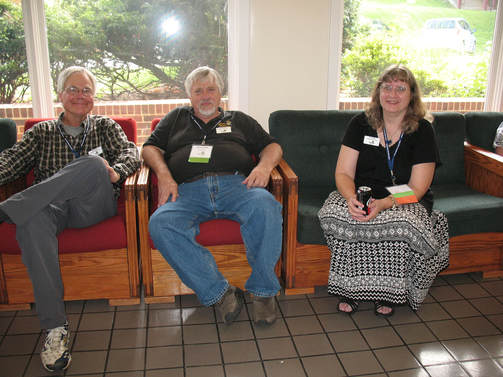 We caught a few members of the conference planning team in a rare moment of rest during a very busy weekend. Left to right: Karl Dydak, Alex Newhart, Sara Dydak.
We caught a few members of the conference planning team in a rare moment of rest during a very busy weekend. Left to right: Karl Dydak, Alex Newhart, Sara Dydak.
The Virginia Master Naturalist 2017 Statewide Conference and Volunteer Training took place in September at the Northern Virginia 4-H Center in Front Royal. Our Shenandoah Chapter served as the local hosts, assisting with program planning and many other aspects of the conference, which was our biggest ever, with approximately 250 attendees. They planned and organized special additions to the conference, including field journaling stations and an amazing assortment of handmade door prizes. In all, 45 members of the chapter supported the conference in some way. Members of the organizing committee and supporting committees were recognized at the chapter’s annual picnic.
Marie Majarov – Marie did an amazing job of redesigning the photo contest process by converting it to a digital format. She received much praise for the effort. It will be used for future state contests as well as adopted by many of the chapters. She also ran our chapter photo contest this year.
Melanie Schneider – Melanie played a big role on our social committee especially in making sure the dining hall looked good for our meals. In particular she hand crafted 32 beautiful center pieces for the Saturday evening dinner as well as provided wild flower vases for all other meals.
Karl Dydak – Karl was our “Green Team” meaning he took care of all recycling, composting and hydration stations by designing the layouts and setting them up. This is a new position to the state conference this year. In addition Karl was always there and willing to help with any tasks. He really did a lot for the conference.
Sara Dydak – Sara stepped in to take over the role as the volunteer coordinator when we lost the person that had originally signed up for that role. Sara came on board late in August just when things were really heating up as we prepared for the conference and then over saw the volunteers during the conference itself. Not an easy job.
Laure Wallace, Margie Miller, Karen Fall, Kelly Macoy – The social committee had a great deal of the work required to prepare for and support the conference. This group was originally headed by Laure and Margie. It transitioned to Karen and Kelly during the summer and they headed up a working group we formed to ensure that all of the various tasks would be completed.
Susan Galbraith and Jo Riding – Susan and Jo were responsible for putting together what we called a ‘local interest’ display for the conference. This display was to inform attendees about interesting things to do in our area. The end result was quite spectacular and well put together.
Richard Stromberg – Richard was part of the group that oversaw the activities of our chapter as we prepared for the conference. This was called the Conference Organizing Committee and was made up of 7 of our members and the three individuals from the state office. Richard’s main task was to help to put together the conference program which in the end was very well received. He also led some field trips into Shenandoah National Park.
Alex Newhart – Alex Newhart served as the lead organizer for the chapter’s contributions to the conference and on our program planning team. He was instrumental in contacting the chapter’s partners to get them engaged in the conference, in recruiting volunteers, and in many other aspects!
Laurels – Fall 2017 Read Post »


